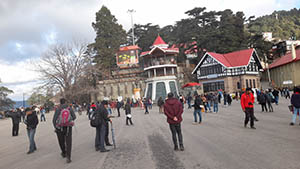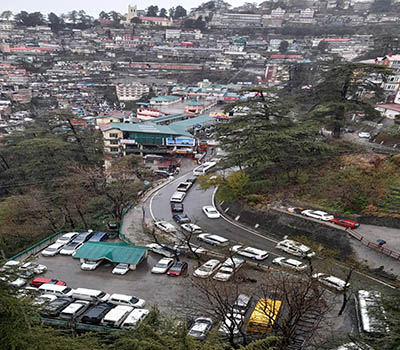SHIMLA: The Supreme Court of India has halted the implementation of the Shimla development plan (SDP), following a notification issued by the Himachal Pradesh government on June 20, 2023.
A three-judge bench, comprising Mr. Justice B.R. Gavai, Mr. Justice JB Pardiwala, and Mr. Justice Sanjay Kumar, heard the matter today and adjourned the hearing to August 11, 2023.
Earlier, the Apex Court had instructed the state government to submit the final Development Plan, as objections raised were left undecided, and the reasons were not communicated, in line with specific directions given in the previous order dated May 30, 2023.
In response, the state of HP assured the Court that the final DP would not be implemented until further orders. Therefore, regardless of the notification issued on June 20, 2023, the state is barred from executing the plan as per the Court's ruling.
The matter remains under the Court's scrutiny, with the next hearing scheduled for August 11, 2023.
With this recent court ruling, the Himachal Pradesh government's notification on June 20, 2023, regarding the SDP, has been rendered ineffective.
As of now, the state has been restrained from enforcing the final SDP until the court provides further orders.
The proposed SDP aimed to impose limited restrictions on plot owners in 17 green belts of Shimla, while also allowing the house owners in the city to use attics for habitation.
The plan's aims at accommodating the increasing population demands by creating satellite town ships, considering a projected population of 3.5- 4 lakh by 2041, covering an area of 22,450 hectares.
SDP has included special areas like Shoghi, Kufri, Ghannati, and additional Shimla planning areas and Jutog cantonment.
Shimla, a scenic hill station, is under pressure from increasing influx of tourists and local population, with demands of the capital city pushing its carrying capacity to the brink.
Shimla has a "satisfactory ecological balance, boasting 44 per cent of its total area as forest, both private and government-owned".
The residents continue to bear the brunt of the Delhi-based green activists as they have to pay commercial charges for the water and electricity. The Congress and BJP governments have failed , despite promise in Election Manifestos, to bring in One Time Settlement policy to regularise their houses.
However, the city's rapid and unplanned expansion over the last four decades has led to concerns, dubbing some areas as "concrete jungles."
The delicate ecosystem and natural environment of Shimla call for careful and sustainable development, but the problem is most of the SMC has a built-up space and a little scope for redemption other than landscaping and beautification, channelisation of its 13 major nalhas and other sub-nallas making them green and clean.
The SDP, formulated by the Himachal Pradesh Town and Country Planning Department under the AMRUT Sub-Scheme of the Government of India, aimed to address these concerns with GIS-based planning for the Shimla Planning Area.
The plan aimed to address the city's growth and aspirations, considering a projected population of 3.5 to 4 lakh by 2041, covering an area of 22,450 hectares.
As the matter now lies in the hands of the Supreme Court, the future of the Shimla Development Plan remains uncertain till the Supreme Court makes it ruling.








